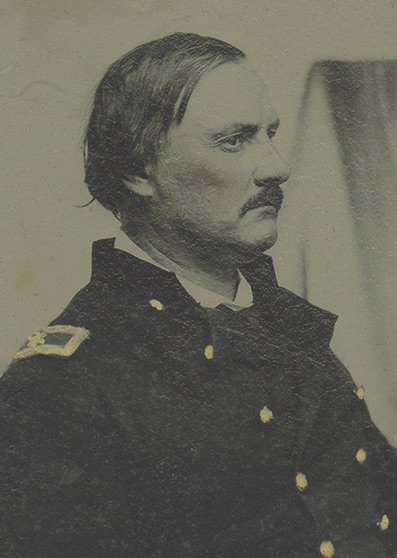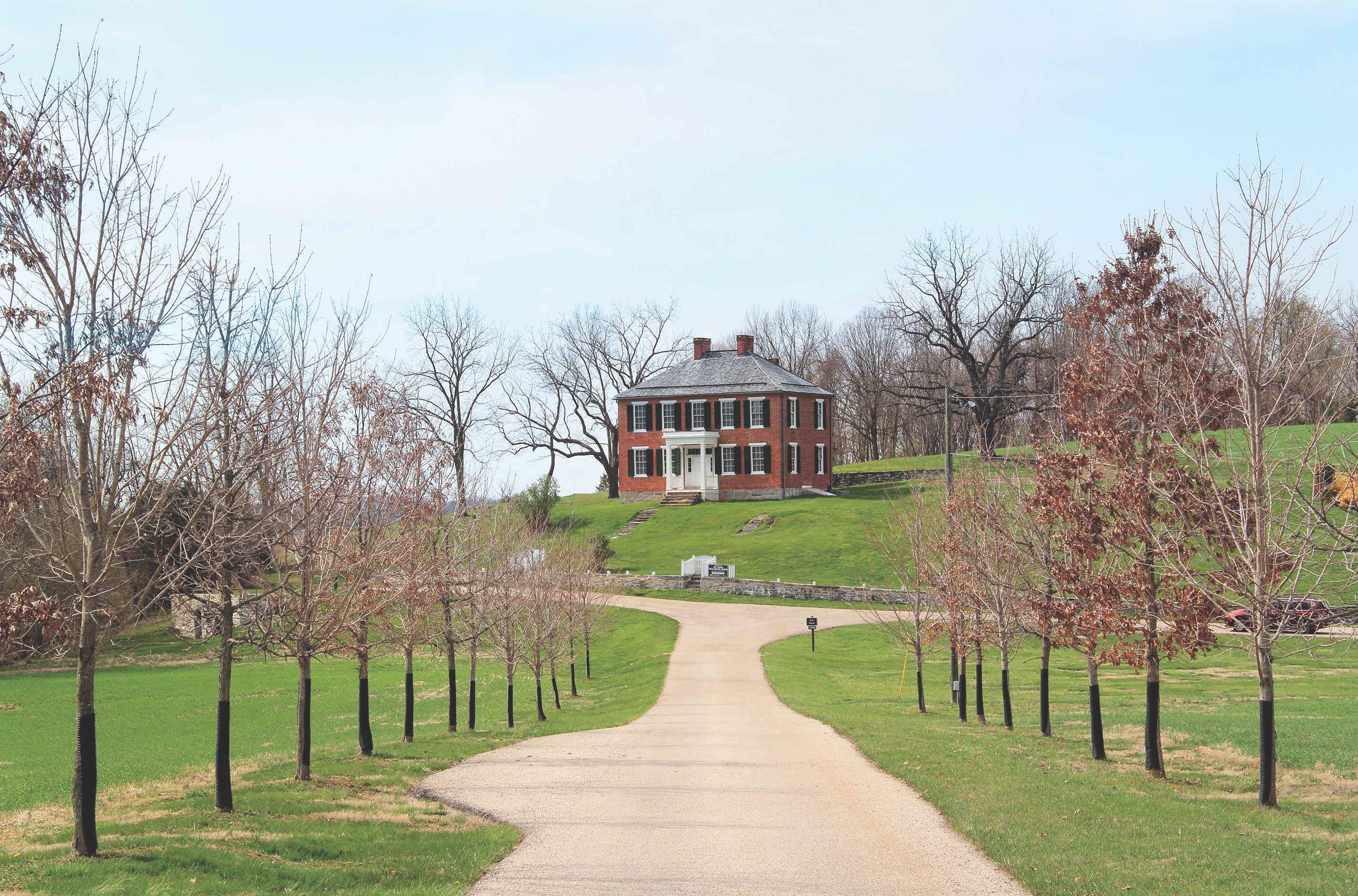Israel Bush Richardson was born in Fairfax, Vt., in December 1815, the second of seven children born to Israel Putnam Richardson and Susanna Holmes Richardson. His father, one of Vermont’s more prominent lawyers, served as a state attorney. As a youngster, Israel loved hearing the stories of his famed ancestor, American Revolutionary War General Israel Putnam, and dreamed of achieving his own military fame one day. Those aspirations were realized in 1836, when he was admitted to the U.S. Military Academy.
Never a brilliant student, Richardson struggled with mathematics and relied on solid study habits and conduct to pull through. He graduated 38th in West Point’s Class of 1841—a class that would contribute 23 generals to the Civil War, including John F. Reynolds, Zealous Bates Tower, Nathaniel Lyon, and Richard and Robert Garnett.
Richardson was commissioned a brevet second lieutenant and fought in the Second Seminole War and then the Mexican War, where he earned the nickname “Fighting Dick” and won the esteem of Winfield Scott, commanding general of the United States Army. Postwar, Richardson was stationed on frontier posts throughout Texas and New Mexico.
In 1850, while in El Paso, Richardson married Rita Stephenson, daughter of a wealthy merchant. She died a year later in childbirth, however. Their son, Theodore Virginius Richardson, survived but would die six months later. Likely overcome with grief, loneliness, and frustration with Army bureaucracy, Richardson resigned his commission in 1855 and moved to Pontiac, Mich., to become a farmer.
When the Civil War opened in April 1861, he promptly offered his services. On May 25, shortly after Richardson married Frances (Fannie) Travor, he was given command of the 2nd Michigan Infantry.

Known for his humility and tough, no-nonsense method of leadership, Richardson quickly earned his troops’ respect. He was most comfortable mingling with his men and was generally seen around camp wearing “a jacket, an old straw hat, and trousers, [into] the side pockets of which his hands are generally thrust.” Richardson disliked pomp and circumstance, and he frowned upon superiors who were unable or unwilling to lead by example.
Richardson earned quick promotion: brigadier general after the First Battle of Bull Run in July 1861 (August 9 with rank to date from May 17); divisional commander on March 13, 1862 (just days before Fannie gave birth to Philip Augustus Richardson, whom Israel had to wait two months to see); and major general on July 4, 1862. Richardson stood out particularly in battles at Yorktown and Seven Pines, and during the Seven Days.
On September 14, 1862, Richardson’s 1st Division, in Maj. Gen. Edwin Sumner’s 2nd Corps, arrived in Western Maryland just as the fighting at South Mountain ended. He took a moment to pen a letter to Fannie: “Now is the time to end war if the North turns out…Now, my dear, take good care of yourself, give my love to all the family, also to little
P. [Philip] kiss him many times.” The next night, his division camped in the vicinity of the Pry House, near Antietam Creek.
During the Battle of Antietam, Richardson personally led his division’s attack at the Sunken Road, managing to drive the Confederates from their position and nearly cutting their line in two. As he was giving orders, however, a spherical case-shot shell burst and one of its deadly lead balls struck the trunk of his body. In his diary, Colonel Edward E. Cross of the 5th New Hampshire, wrote that his commander had been struck in the “breast,” but Lieutenant Thomas Livermore, also of the 5th New Hampshire, claimed Richardson “received his mortal wound in his side.” Nevertheless, wounds to the trunk of the body were often mortal.
Though stunned, Richardson continued to walk around for several minutes before succumbing to the agony. He was carried from the field with the words, “Tell General McClellan I have been doing a Colonel’s work all day, and I’m now too badly hurt to do a General’s.” Tragically, it was James Longstreet, a good friend but now a foe, who ordered the cannon fire that caused Richardson’s injury and eventual death.
Richardson was evacuated to a field hospital, where he waited in extreme agony nearly four hours before receiving treatment. He was then taken to the Pry House and placed in an upstairs bedroom. Major General George McClellan sent Dr. Benjamin Douglas Howard, a member of his staff, and Army of the Potomac Medical Director Dr. Jonathan Letterman to examine Richardson. Both men feared shrapnel was lodged in his left lung and deemed the wound mortal.
But Dr. J.H. Taylor, the medical director of Richardson’s division and a close personal friend, examined Richardson and did not think the lung had been damaged. Taylor refused Letterman’s request to tell Richardson his fate, saying it would “kill Israel if he did.” The wound was excruciating and efforts by doctors to extract the embedded lead shrapnel ball proved futile. Pneumonia soon set in, although Richardson would recover and steadily improve under Taylor’s care.
Upon learning of her husband’s injury, Fannie traveled from Alexandria, Va., with one of her sisters-in-law to care for him. She would write, “Israel is slowly but steadily improving [but he] has grown very thin and very weak. He is very much depressed, not at all like himself, and inclined to look on the dark side, more than is good for him.”
On October 4, Abraham Lincoln visited Richardson at the Pry House. As related in Jack Mason’s Until Antietam: The Life and Letters of Major General Israel B. Richardson, U.S. Army, Captain Draper—a member of Richardson’s staff who was present—said the president told the general that if he recovered he would be named McClellan’s successor as Army of the Potomac commander.
By the end of October, Richardson’s wound became infected. Noted Taylor, “[H]is nervous system is much shocked. So much so that he makes no effort to rally, and has himself given up all hopes for recovery.” At 7:50 p.m. on November 3, 1862, Israel Richardson succumbed to his injuries and passed away.
On November 11, Richardson was laid to rest at Oak Hill Cemetery in Pontiac. As Taylor penned in his eulogy, “He looked at the world through his own unselfish nature, trusted to that integrity in others…As he lived for others, so did he die.”
This blog, adapted for print, first appeared on the National Museum of Civil War Medicine’s website, www.civilwarmed.org.





